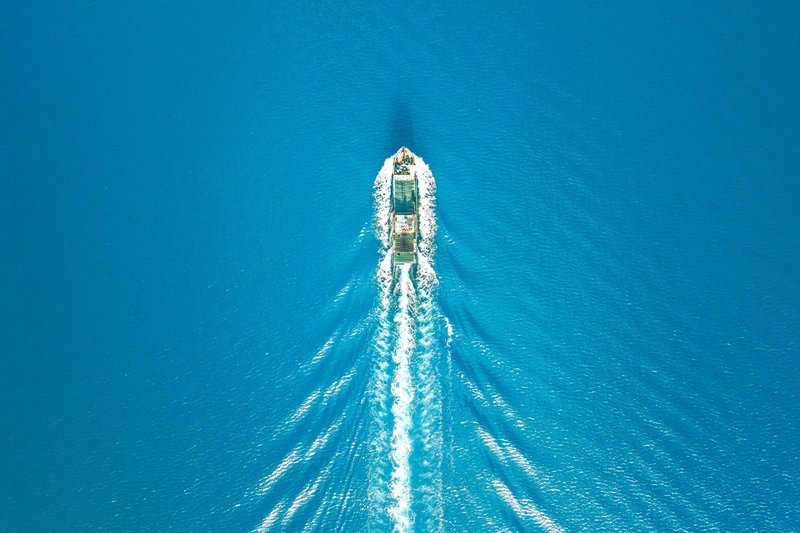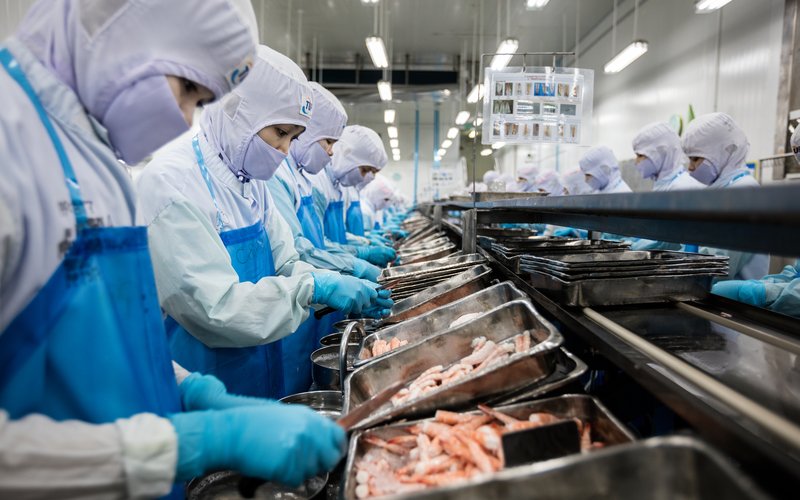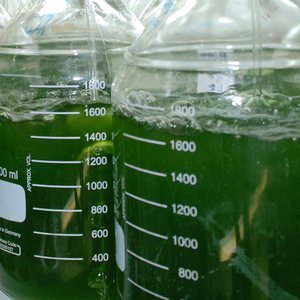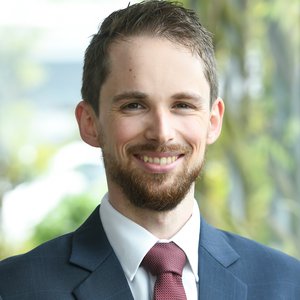Thai Union launched SeaChange® 2030, the next stage of its sustainability strategy to help reshape the seafood industry with solutions across people and the planet that better sustain a future for all. The company is committing the equivalent of its entire 2022 net profit of THB 7.2 billion (USD 200 million) to SeaChange® through 2030 and setting aggressive new goals that will impact the entire seafood value chain on a global scale. Aquafeed.com talked with Blake Stok, director of sustainability, Thai Union North America, to get some insights on the new sustainable commitments specifically focused on aquaculture and aquafeeds.
SeaChange® 2030 marks a significant expansion of the company’s sustainability strategy, first created in 2016. Since then, Thai Union's sustainability strategy has been improving and built on the achieved improvements. The company completed its first greenhouse gas inventory across scopes 1, 2 and 3 emissions and has set aggressive targets to reach net zero by 2050. On the ground, the company sees that the strategy has had an impact on the operations and the day-to-day life of those working within those operations and the companies where Thai Union sources from.
“We have also been approached by governments, customers and civil society groups on how our best practices are working and how they can be implemented. With this kind of dialogue, we feel that we are moving in the right direction,” said Stok. Another indicator is that the company has been ranked number one globally for the food products industry at the Dow Jones Sustainability Indices.
“We think of SeaChange as a plan that covers each aspect of the industry, from how we look after the ocean to how we manage our waste and the responsibility we take for our workers. We are immensely proud of our progress, and we recognize that there is this need to do more and that is why we launched SeaChange 2030,” Stok stated.
The new plan is an evolution. This new holistic strategy has set big bold targets committing Thai Union’s 2022 net profit of USD 200 million through 2030 to implement the strategy. “We have been joined by the most impactful players in global sustainability and eco-leadership to align the strategy. Eleven interconnected commitments will help reduce carbon, minimize waste, safeguard ecosystems, ensure safe, decent and equitable work, and ultimately enhance a healthier world. They address ten UN sustainable development goals,” Stok explained.
Reducing greenhouse gas emissions
One of the main commitments is a 42% reduction in greenhouse emissions of scopes 1, 2 and 3 by 2030 and achieving net zero by 2050. This is for emissions for the company’s own activities, services, upstream and downstream, and distribution. Thai Union is the first seafood company of its size to align its targets with a science-based target initiative. “Carbon offsets are not part of the strategy and we focus more on the foundational long-term change that we think the industry must implement to make us ultimately sustainable,” Stok explained.
Thai Union plans to reduce farm operations' energy usage, utilize alternative feed ingredients and explore zero to low-carbon fuels and technologies to be implemented. In its production, the company will phase out coal from its operations by 2025, install renewable energy and increase energy efficiency, also looking to ensure recyclable packaging and reduce the demand for raw materials.
Aquafeeds
“Without sustainable aquafeeds, there is no sustainable aquaculture seafood,” Stok highlighted. Thai Union is committed to the responsible sourcing of raw materials used for feed production in its feed mills. All feeds produced by Thai Union Feedmill (the company’s feed subsidiary, TFM), regardless of species, use tuna guts and steamed fish sauce in the feed formulation. Currently, TFM has a total of six formulations of shrimp feed in the market that are free of fishmeal from reduction fishery but still utilize byproducts (mostly from tuna processing).
TFM has introduced Corbion’s algae oil to replace fish oil, achieved 100% sourcing of RSPO-certified palm oil and committed to sourcing at least 50% of RTRS-certified or equivalent soy ingredients last year to meet BAP requirements. All Thai Union feed mills in Thailand are BAP certified and the company is striving for ASC certification. TFM has also carried out feed trials with novel and innovative feed ingredients, including insect meal, to bring them to the commercial market once the cost becomes more affordable.
The company has been sourcing MarinTrust-certified fishmeal that comes from wild-caught fisheries strengthening the company’s environmental and social sustainability standards. Thai Union has also been involved in the MarinTrust Improver Program with the Gulf of Thailand mixed-trawl Fishery Improved Program. “Multi-species criteria being piloted in that project will provide a framework, not only to measure the progress along the journey but also serve as a model for other multi-species fisheries,” Stok said.

Credits: Thai Union
Responsible shrimp farming
“There is a huge opportunity to improve the efficiency of shrimp farming while simultaneously lowering the environmental impact,” Stok said. As an example, Stok mentioned the investment in Hydroneo, a company that uses high-tech solutions to optimize shrimp aquaculture production, as part of SPACE F, the first food-tech incubator and accelerator program in Thailand.
“We are committed to innovation and as part of this strategy, Thai Union refers to traceability as its backbone of SeaChange. It is key to improve transparency and operational best practices for the entire seafood supply chain. With that traceability in place, we can track every product from catch or farm to consumption and we can ensure that our suppliers are aligned with the same sustainability commitments. At the onset of SeaChange, we invested in traceability as our number one priority. In 2021, we began piloting the use of satellite imagery for shrimp production in collaboration with Sea Warden and Wholechain to promote sustainable seafood production, the main goal being to generate key data for shrimp farms that are automated independently verified and cost-effective,” Stok explained.
“This focus on enhancing traceability extends down the value chain to farms, feed and soy producers, across direct and indirect operations, so we can ensure that from farm to consumer and ingredients are certified against ASC or BAP standards. We want to ensure that feed used in the supply chain is certified against a credible standard and ensure ingredients are deforestation-free and protect the marine environment,” Stok stated.
The new commitments are 100% of the farmed shrimp and its feed is produced responsibly meeting credible standards or in an improvement program and 100% of the farms the company sources from are safe, decent workplaces by 2030. “This addresses biodiversity by minimizing the impacts on local ecosystems, and pollution by having strict controls on wastewater, disease and antibiotics to minimize outbreaks of disease through the increase of biosecurity. We committed to eliminating critical antibiotics needed for human health as defined by the WHO. We also thrive on our social and labor best practices to ensure safe and decent workplaces,” Stok said.
Other challenges
The plan has added new goals in recyclable packaging and plastic management. Four hundred million tons of plastic are produced every year and 36% of that is used on packaging including single-use plastics used for food containers. Approximately, 85% of this amount ends up in landfills as unregulated waste. In addition, by 2050, there are going to be more pieces of plastic in the oceans than fish and the world will continue to produce plastic and that will add up. “Converting to sustainable packaging helps support a circular economy reducing waste and meet consumer demands. By advancing our packaging and developing circular solutions through our global innovation center, we are going to reduce pollution. Our holistic strategy includes being active in regulations and governments to support effective recycling and this is a critical and foundational step to tackling these global issues,” Stok said.
Another main challenge is climate change, “a code red” for humanity. “To prevent devastating effects on our planet, we must rapidly cut greenhouse gas emissions by half in 2030 and achieve net zero by 2050. Although the seafood industry makes a relatively small proportion of greenhouse gas emissions, it still needs to be part of the solution. Lastly, the plastic strategy is also part of the solution,” Stok said.
For 2030, five key outcome areas have been identified under two banners, for people and the planet. “For people, providing safe and decent work, and equitable workplaces remain a priority for us, as well as health and wellness. On the environmental side, it is imperative to tackle climate change, and implements circularity to prevent biodiversity loss,” Stok said.
Innovation
“Innovation is core to who we are at Thai Union,” Stok said. Thai Union also launched Asia-Pacific Agri-Food Innovation Summit, an innovation challenge for startups developing novel ingredients and applications from ocean-derived ingredients.
“We recognize that traditional animal proteins will continue to play in the world and the future, and we also recognize that the demand is growing for insect and cell-based proteins. We’ve invested in many companies across different sectors, for example, BlueNalu or companies developing orally administered RNA for aquaculture,” Stok explained.
Three finalists will present their solutions at the Asia-Pacific Agri-Food Innovation Summit on October 31, with questions from a panel of Thai Union senior executives before the winner is crowned in front of the global agri-food audience. The winner will receive support and guidance from Thai Union’s Global Innovation team, including technical expertise, regulatory assistance, and formulation development, to bring their ideas to life and make a positive impact in the realm of diet and nutrition. Application deadline is August 16, 2023.













